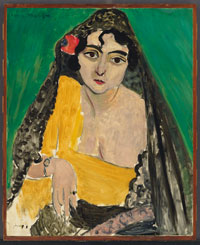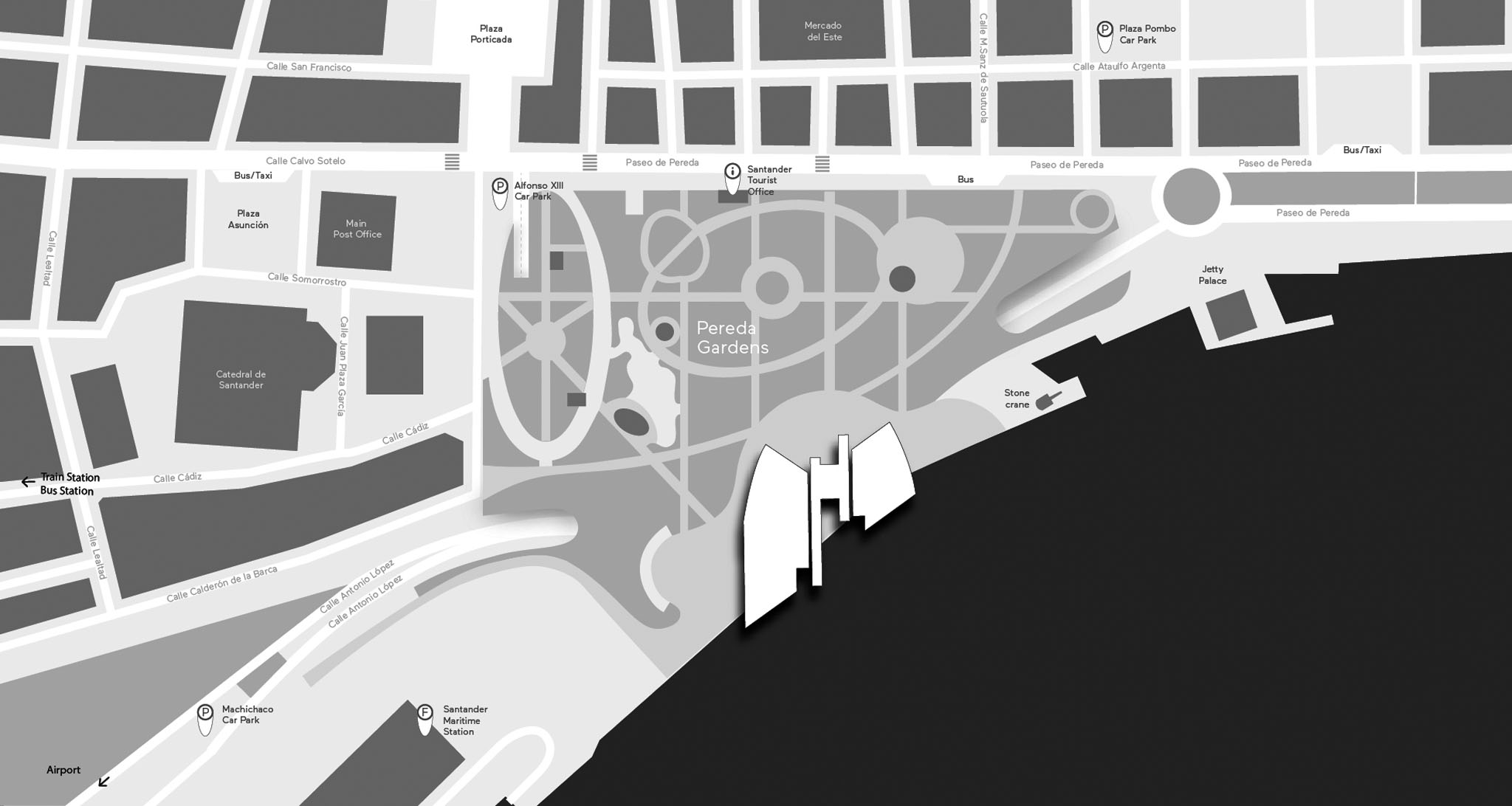Henry Matisse Femme Espagnole

Femme Espagnole, 1917.
Oil on board. 67 x 55 cm
‘Femme Espagnole’, a painting made by Matisse in Paris in 1917, in his studio overlooking Notre Dame on the Quai St Michel, was actually of an Italian professional model called Laurette, here dressed up in an ‘exotic’ costume for the purposes of this painting. Laurette was depicted in many guises and poses in the approximately fifty paintings executed over a period of approximately a year from 1916 to 1917. We know that Laurette had a sister, Anna, or Annette, who sometimes appeared alongside her, but beyond that we know very little about them—not even a surname. Sometimes, Laurette’s name was even spelt Lorette, suggesting in the case of both sisters a degree of unfamiliarity uncommon for Matisse, whose principal female models until this time had been friends and collectors, including the legendary Gertrude Stein, his wife Amélie, their children, two sons, and his beloved Marguerite, his earlier daughter by another woman.
Laurette had been recommended to Matisse by his friend, the painter Georgette Agutte, by this time a ‘fauve’ artist herself. They met in 1891, when he was studying in the atelier of Gustave Moreau, and they remained good friends. Of course, in 1916/17, France was still at the very centre of the seemingly endless horrific World War I. Despite many ups and downs, Matisse had become a successful and notoriously ‘uncompromising‘ painter of many radical art-history-changing images. These had announced themselves to the world with the radical and wildly coloured portrait of his wife, ‘Woman in a Hat’ (1905), which, once seen in a public exhibition in Paris, led him to be perceived indeed as the most outrageous of the ‘fauves’ (wild beasts), alongside Derain.
However, after the war started, Matisse had been largely cut off from his prominent, almost exclusively foreign, supporters in Germany, Denmark, Britain, America, and Russia—principally Serge Shchukin. In his other studio outside Paris, in Issy-les-Moulineaux, he had still been executing large ‘difficult’ paintings, such as ‘Bathers by a River’ (1909–1916), and the ‘the Moroccans’ (1915–1916), thinking through issues raised by Picasso’s Cubism. Still for Matisse, colour was as central an issue as volume and form is to modern painting.
He may have wished to find a model to execute more ‘sellable’ and smaller paintings at this difficult time. Laurette proved ideal for Matisse with her jet-black eyes and long hair, as well as her obvious delight in dressing up, being semi- or even fully naked, or even posing in normal clothes. She would strike endless different poses sitting on chairs, lying on beds, or even on the floor. Laurette dressed here as a ‘Spanish Girl in a Mantilla’ can be seen in part as a recollection of a true fauvist ‘Spanish’ painting Matisse did back in 1908, now in the Pushkin Museum, Moscow. But in this later painting here, the ‘all over’ calibration of colour is far more delicate—even refined. The dark green background has equal significance in the painting in contrast to the thin pink-greyish flesh tones of the model herself, dressed up in the dull yellow of her décolleté day dress, over which falls the rich, black, almost inky calligraphic execution of the mantilla. Her black eyes and lashes and the falling lock of hair, even the touch of ‘abstract’ red, signifying a rose in her hair, perfectly define Matisse’s obsession with finding a true balance between human, usually female, character representation and the abstracting possibilities of the medium of paint.
At Christmas in 1917, Matisse was to head by himself—sans his wife—to the South of France, to Marseilles. Ultimately, of course, he would travel long-term to Nice, where the lessons he learnt from painting Laurette, whom he was not to see again, would inform his paintings of a succession of female models. In the final episode of his career, during World War II, he became too ill to paint as such, and he found for himself the way of addressing the all-important issue of colour in his miraculous cut-outs. Looking at this gentle, characterful painting in all its sophisticated simplicity, one can almost sense an anticipation of so much of what was to come.
Norman Rosenthal, director of exhibitions at the Royal Academy of Arts in London between 1977 and 2008 and expert on Henri Matisse.

